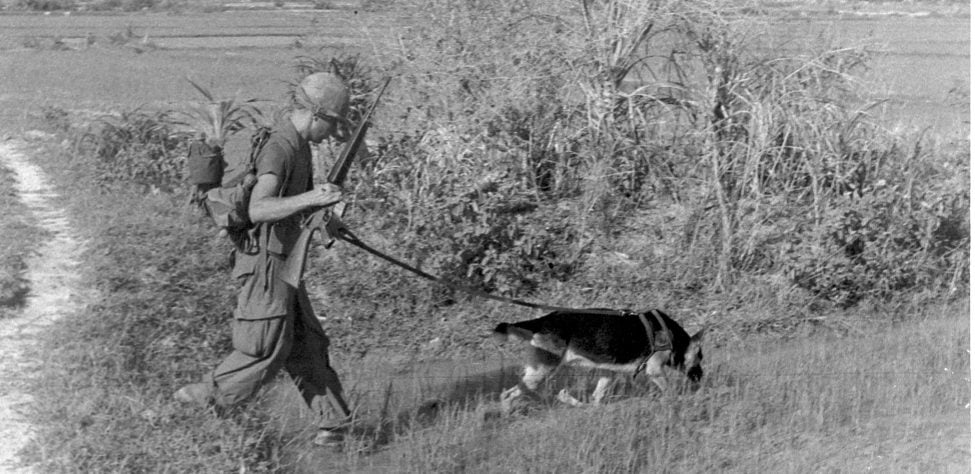Hello ladies and gents this is the Viking telling you that today we are talking about
DOGS OF THE VIETNAM WAR

Dogs have been man’s partners in war for a long time — at least as far back as 4000 BC. Their keen senses, learning ability, physical endurance, and devotion to man have made them invaluable companions on battlefields both past and present. In the jungles of Vietnam, nearly 4,000 specially trained dogs served in a variety of combat roles, reportedly saving tens of thousands of U.S. troops from injury and death.
The Vietnam War introduced American troops to a new kind of warfare. Patrolling thick, triple-canopy jungles was dangerous by day, and even more perilous by night. Enemy fighters used the jungle to their advantage, employing guerilla tactics (such as ambushes, mines, tunnels, and traps) in ways that U.S. troops hadn’t encountered before. A well-trained dog became an extension of his handler’s senses — seeing, hearing, and smelling danger that was otherwise undetectable.
The German Shepherd Dog (GSD, also known as Alsatian) was the most common service dog in the Vietnam War, used for scouting, sentry duty, mine/tunnel detection, and water patrols. Labrador retrievers were also widely used, primarily as trackers. Dogs were trained to alert their handlers to all kinds of hidden dangers, from snipers to trip wires and weapons caches. Dogs could even detect enemy fighters submerged in rivers, breathing through hollow reeds and waiting to attack American watercraft.
These dogs and their handlers are credited with saving more than 10,000 U.S. lives (imagine The Wall with 10,000 more names inscribed on it) and preventing certain injury for countless more. They were so effective that they became special targets for the enemy, who began attacking kennels and offering bounties for the shoulder patch of a dog handler or the tattooed ear of a service dog.
When the war ended, many handlers wanted to bring their dogs home to America. In a decision that remains controversial to this day, the Department of Defense classified the dogs as equipment, and most were left behind — transferred to the army of South Vietnam, systematically euthanized, or simply abandoned. Only around 200 made it home to “retire” in peacetime.
This unfitting end motivated Vietnam dog handlers to act. Due in large part to their collective efforts, “Robby’s Law” was passed by the U.S. Congress in 2000. Since then, no adoptable dogs are euthanized at the end of their military service. Instead, they are offered first to former military dog handlers, then to law enforcement, and finally to qualified families, who undergo a rigorous screening process.
And as always have a chilled day from the Viking.
Comments
Post a Comment